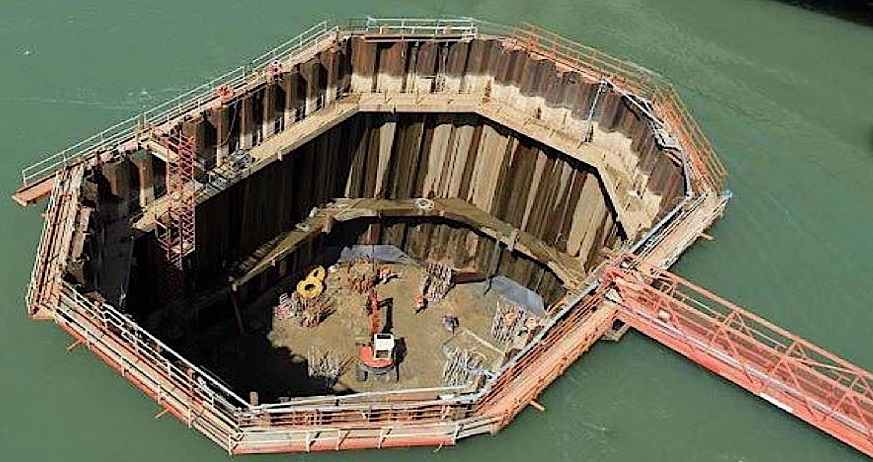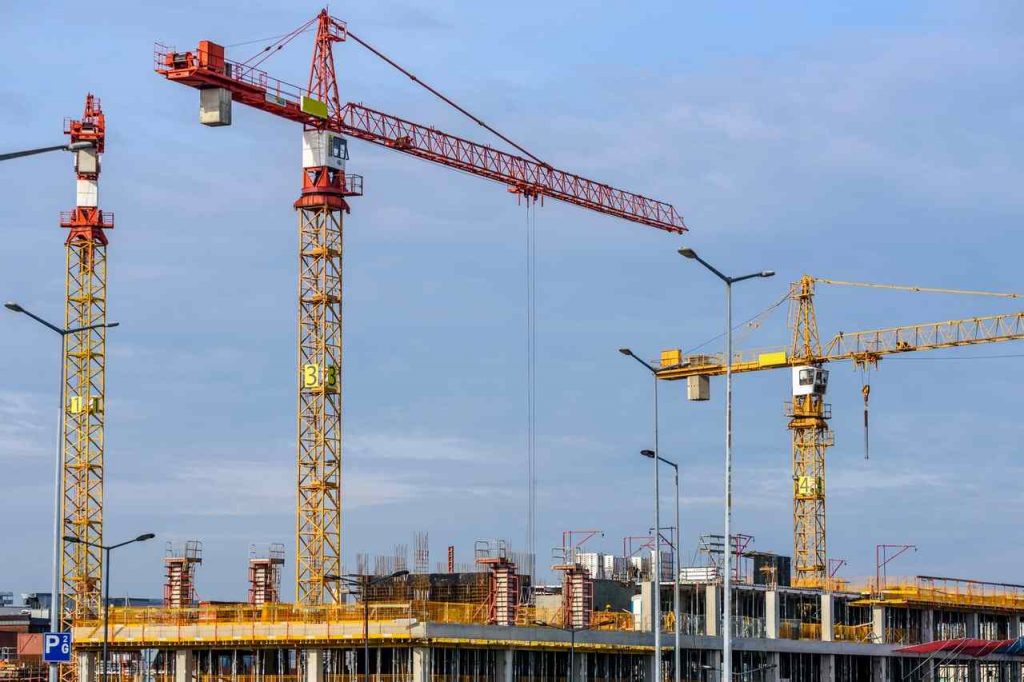
A cofferdam is a temporary structure built around the construction site to remove water and to make the construction area reasonably dry. So it is the type of structure, which is needed to be constructed at the beginning of any hydraulic construction
Need of Cofferdams
- To make the construction area reasonably dry
- To protect the structure under construction from flood, and a number of natural calamities
- To make it using reusable material so that it should be economical and will be easy to dismantle.
Types of Cofferdams
There are a wide variety of types of Cofferdams, which generally depends upon some factors which are, depth of the water level above the toner bed, the velocity of the water, the material available near the construction site and danger of overflowing of water.
The name of the common Cofferdams which are generally used in the modern hydraulic constructions are given in the following:
Sandbag Dike:
When the Depth of water is low and the velocity of the flow is low, this type of Cofferdams is generally being used. These type of Cofferdams are constructed using cement bags partially filled with a mixture of cement and sand and systematically laid around the area in courses. This type of Cofferdams are very economical, easy to construct and dismantle, and there is no uncertainty of the availability of construction materials.
Earth fill Cofferdams:
When the height of the water level above the riverbed does not exceed 3m, this Cofferdams is often practised. The requirements of constructing these types of dams are that the velocity should be low and the adequate materials should be available near the water bodies.
This type of dams is constructed by cement, clay and silt. In order to resist the overflowing, a freeboard of 1m is provided at the top of the dams. The slope of the dams varies between 1:1.5 to 1:2. The slope of the upstream waterside is pitched with rubble stones in order to prevent scouring the embankment. Oftentimes sheet pile is driven at the centre of the dams to resist seepage.
Rockfill Cofferdams:
These types of dams are better than Earth fill dams. It can be construed when the height of the water level is up to 3m. It is mostly adopted when there is adequate availability of rocks near the Riverside area.
In construction techniques, it is similar to that of the Earth fill Cofferdams except for the fact that it is completely constructed by rocks instead of cement and soil in the case of Earth fill dams. An impervious layer of Earth is provided in the upstream side, in order to prevent scouring and seepage. The slope of both sides may vary from 1:1.5 to 1:1.25. They are also used to sustain swift water flow.
Rockfill Cribs Cofferdams:
These type of Cofferdams may be used when the height of the water as well as the flow is high and may be adopted when the stream has a hard bottom. It consists of a framework of wooden beams laid in a horizontal direction. This framework is known as a crib and is open at the bottom and filled with sand and gravel to improve stability. On the sides, it is provided with sheet piles to prevent the seepage of water in the construction area.
Single Wall Cofferdams:
This type of dams is mostly adopted in the construction of bridges, particularly in the construction of bridge piers, where the height of the water level is more than 6m and the construction area is less.
The construction procedures include of driving of timber sheets in the river bed along the perimeter of the construction, within which steel piles are driven, maintaining equal distance using wales. The wales are bolted with connecting sheets on either side. To improve stability, cement bags are put on both sides of the walls. After dewatering of the area, construction is executed.
Double-wall Cofferdams:
In the place where the Single Wall Cofferdams becomes uneconomical, and the water level as well the velocity of flow is high, Double wall Cofferdams are used. The prime difference between the Single Wall Cofferdams and double wall Cofferdams are that in this case, Double walls are used. Two piles are driven inside the river bed with a space between and attached with each other using wales. This type of walls can be used when the height of the water level is more than 12m.
Cellular Cofferdams:
When the height of the water level is more than 20 meters, normal Cofferdams becomes uneconomical on that condition. For such a case, Cellular Cofferdams are being used. This type of Cofferdams is generally useful for the construction of dams, weirs and other water bodies.
There are two types of Cellular Cofferdams, these are—
- Circular type consists of circular cells
- Diaphragm type consists of diaphragm cells.
The construction procedures include driving steel web sheets in the form of a cell which can of a different shape. The cells are filled with sands, gravels in order to make them stable against various forces which are likely to act on the structure.

